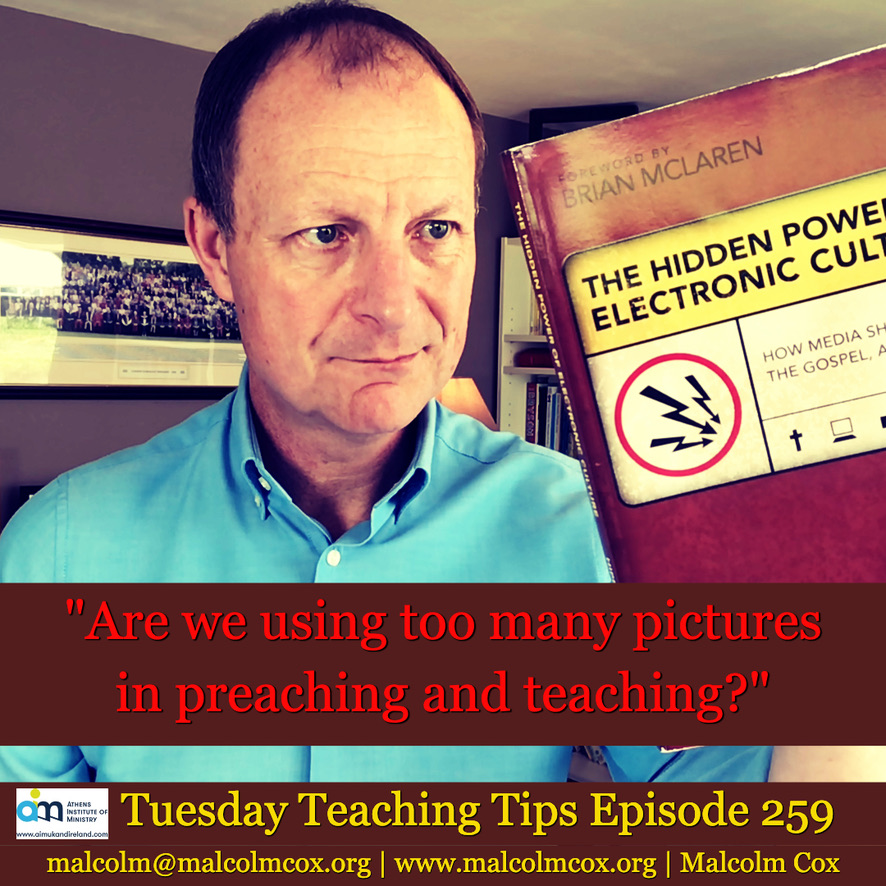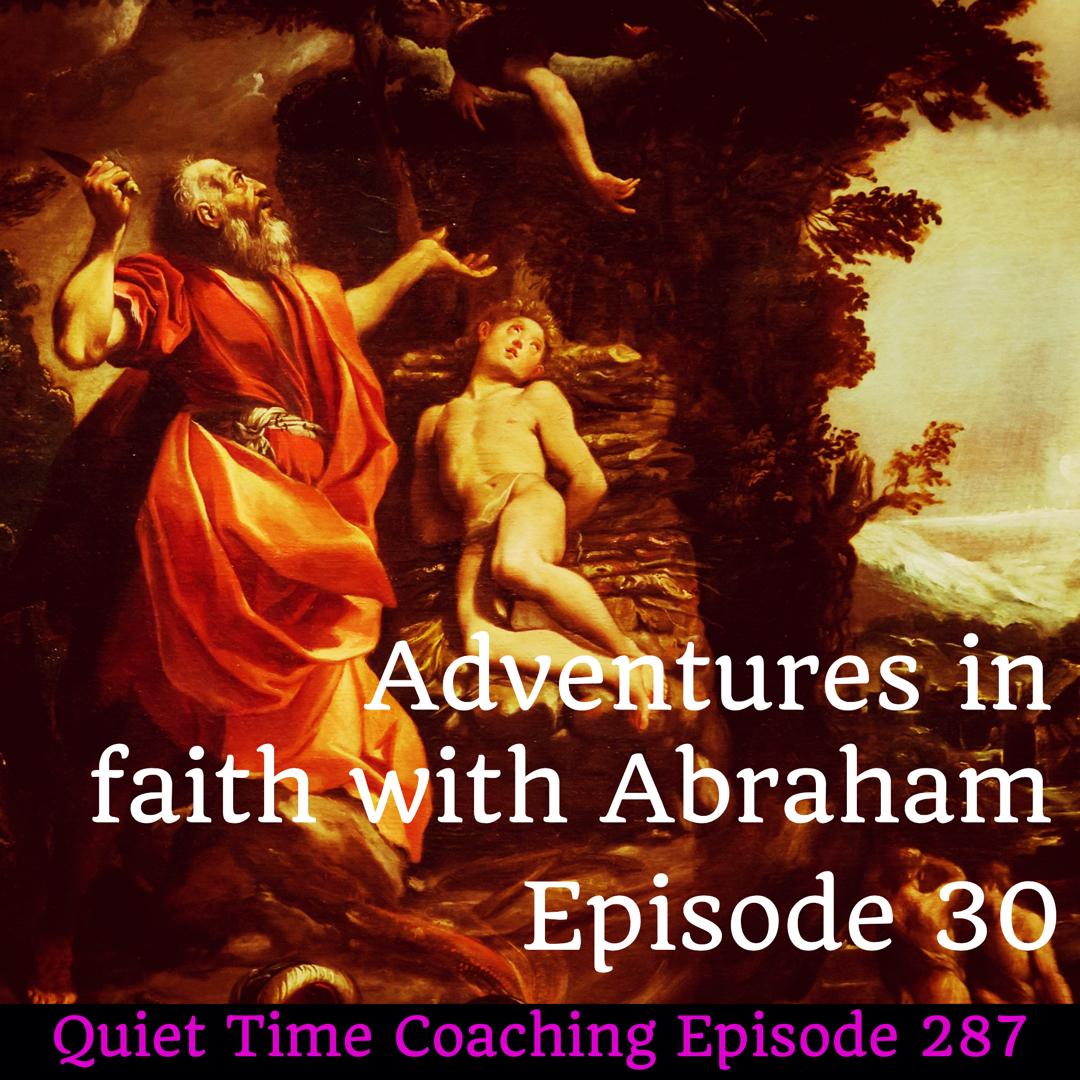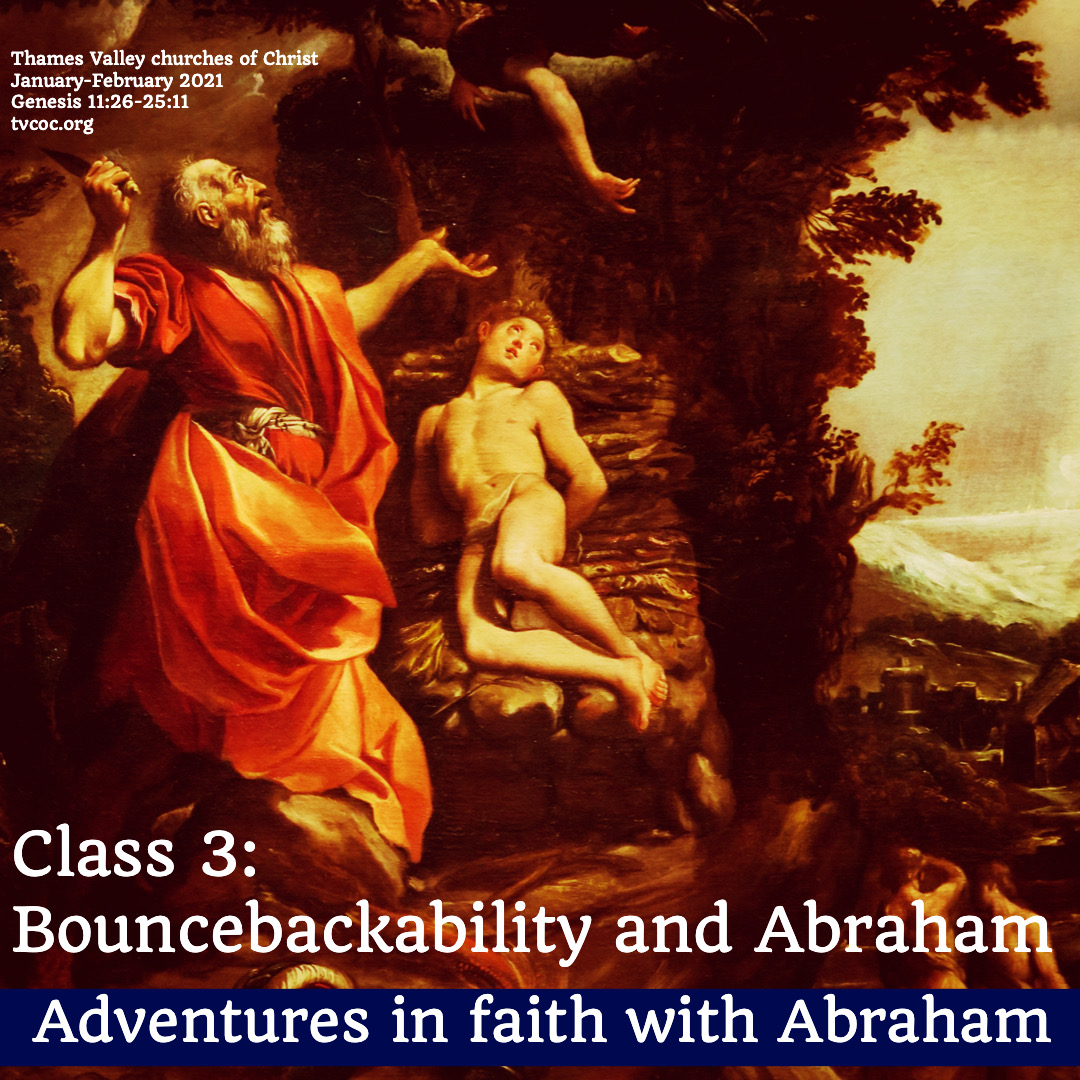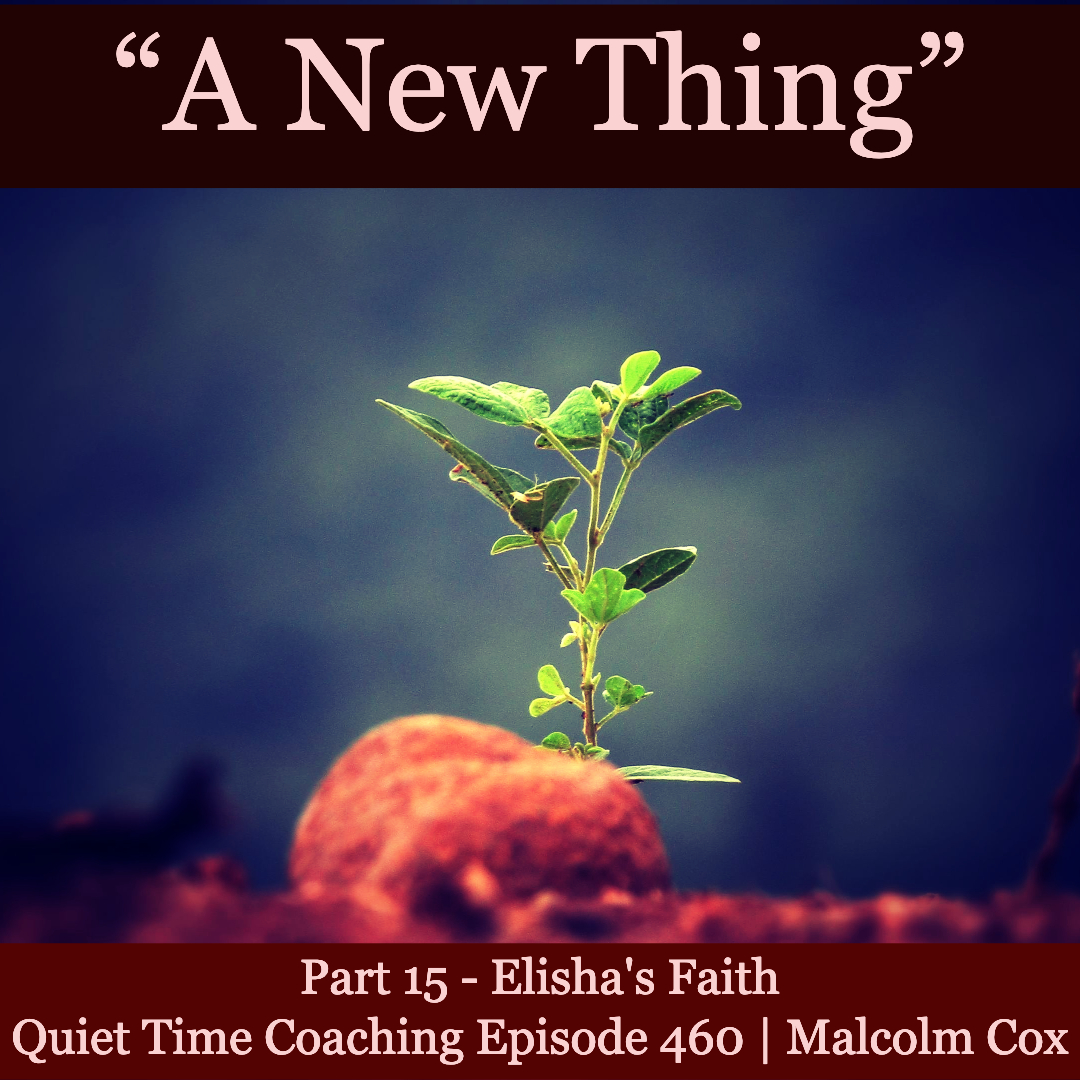Teaching Tips 259
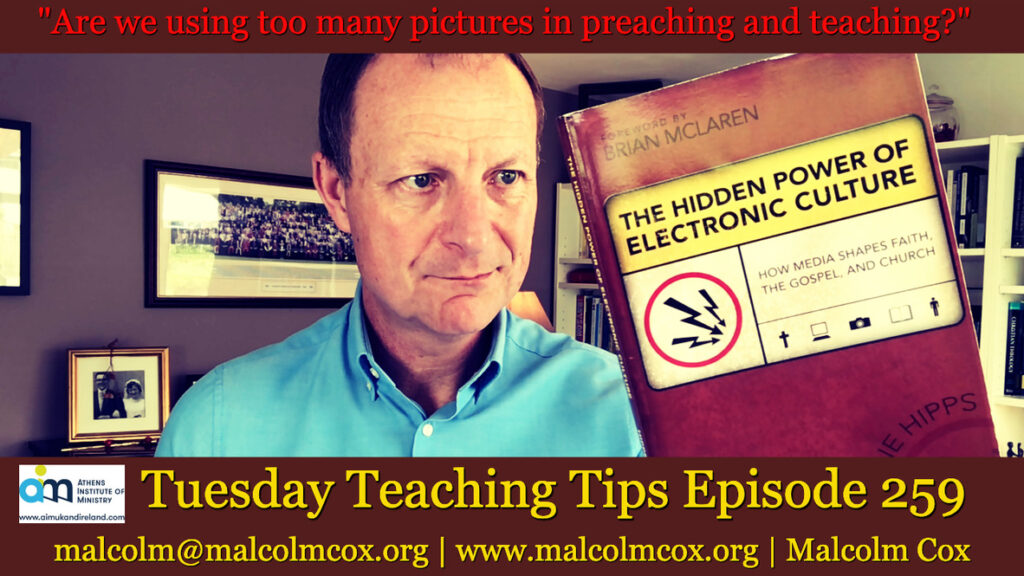
It seems pretty much given these days that when we preach and teach we should use images. There’s been a lot of talk over the last few years about visual learners. We know the impact that an arresting image can have.
As a simple illustration, and if you’re listening to the podcast you’ll have to use your imagination, let me make a statement, followed by an image. You tell me which one has the most significant effect on you.
First the statement: “the man was shocked”
Now I will put the image on screen: ……..

So, which had more impact on you?
What is the relevance here for our preaching and teaching? Well, yesterday as part of my Masters in Theological Studies I was reading this book, “The hidden power of electronic culture” by Shane Hipps. In it he makes the point that since the invention of photography the use of images in communication has come to dominate communication to the downgrading of the significance of written and spoken communication. Is this a good thing, a bad thing, or is it neutral?
He writes, “We may be in danger of undoing some of the most valuable aspects of modernity’s influence on Christian faith, such as our dependence on the medium of Scripture or the development of leaders who are well-versed in our sacred texts.” 77-78
I like the Bible Project and similar resources. But, are we allowing them to replace our own devotion to the text? It might be easier to watch a video, but the question is, what is it making harder?
In particular, the subtle influence of image over word might be shaping the kinds of biblical texts we feel comfortable preaching, and those our congregations like to hear from. Consider, for a moment, Luther.
Luther preferred the gospel of John and Paul’s writings. He loved the printed word and the abstract teaching of doctrines about Jesus. However, the modern age prefers the Synoptics because they tell the story of Jesus. Hipps says, “Images are simply not well-suited to convey [Paul’s] abstract, rational prose.” 79
Last year I preached a series on Colossians, and I remember thinking at the time that it was hard finding images to illustrate points from the lessons. If I am only teaching topics, doctrines and ideas which can be easily represented by images, what other topics, doctrines and ideas am I avoiding?
Let’s consider the example of Jesus. Granted, he had no access to photographs or other modern visual media. However, he used materials to enhance his teaching:
– the child he drew into his arms;
– the fig tree he cursed;
– the coin he used to answer a question;
– drawing attention to the real-life example of rich people throwing their money into the temple Treasury and the widow putting in her two coins.
If Jesus used such techniques, it seems reasonable to utilise media to enhance the message. However, in preaching and teaching we must aim to keep the Scriptures more prominent because they contain the message in a way that images cannot. The teachings of Jesus had the impact they did, and were remembered without significant use of imagery. Therefore, images can be useful, but plainly are not necessary.
It is not either-or, is it? People may have a preference for the written over the visual or the visual over the written, but they should not be seen in opposition to each other because they have different capacities and therefore different purposes.
How much do you use images in your teaching and preaching? What guidelines do you have to ensure you use them well? Are you concerned, as I am, that we might be avoiding some parts of Scripture simply because they are hard to illustrate visually?
Please add your comments on this week’s topic. We learn best when we learn in community.
Do you have a question about teaching the Bible? Is it theological, technical, practical? Send me your questions or suggestions. Here’s the email: [malcolm@malcolmcox.org](mailto:malcolm@malcolmcox.org).
If you’d like a copy of my free eBook on spiritual disciplines, “How God grows His people”, sign up at my website: http://[www.malcolmcox.org](http://www.malcolmcox.org/).
Please pass the link on, subscribe, leave a review.
“Worship the LORD with gladness; come before him with joyful songs.” (Psalms 100:2 NIV11)
God bless, Malcolm
